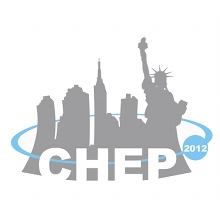Speaker
Norman Anthony Graf
(SLAC National Accelerator Laboratory (US))
Description
LCIO is a persistency framework and event data model which, as originally presented at CHEP 2003, was developed for the next linear collider physics and detector response simulation studies. Since then, the data model has been extended to also incorporate raw data formats as well as reconstructed object classes. LCIO defines a common abstract user interface (API) and is designed to be lightweight and flexible without introducing additional dependencies on other software packages. Concrete implementations are provided in several programming languages, providing end users the flexibility of using multiple simulation, reconstruction and analysis frameworks. Persistence is provided by a simple binary format that supports data compression and random event access.
LCIO is being used by the ILC and CLiC physics and detector communities to conduct performance benchmarking studies such as the recently completed CLiC CDR and the ILC Detector Baseline Design study to be completed in 2012. Detector studies for the Muon Collider are also being conducted using LCIO as the event data model and persistency. Multiple test-beam collaborations have used LCIO to store and process tens of millions of events, providing experience with real data. Recently the Heavy Photon Search collaboration adopted LCIO as its event data model and offline persistency format.
In this talk we present details of its use in these various applications, and discuss the successful cooperation and collaboration LCIO has enabled. We will also present the design and implementation of new features introduced in LCIO2.0.
Authors
Dr
Frank Gaede
(DESY IT)
Jan Dominik Engels
(Deutsches Elektronen-Synchrotron (DESY))
Jeremy McCormick
(Unknown)
Norman Anthony Graf
(SLAC National Accelerator Laboratory (US))
Steven Aplin
(DESY)
Tony Johnson
(Nuclear Physics Laboratory)
